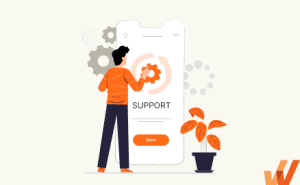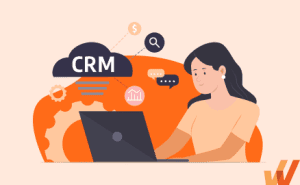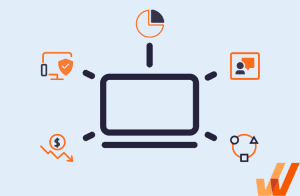For growing companies and enterprises, CRM software is mission-critical for sales success and the single source of truth for managing everything sales and marketing, including:
- Managing sales opportunities and engaging prospects through the sales cycle
- Segmenting and microtargeting audiences for better conversions via email, push notifications, or third-party ad platforms
- Nurturing leads using automated follow-ups sequences
- Mapping customer interactions to understand better which touchpoints maximize conversions, etc.
Consequently, whether you’re switching to a newer version of the same product, moving off-premise to the cloud, or deploying a completely new CRM to replace your current setup, a digital transformation of legacy systems and sales processes to cloud CRMs easily one of the most impactful changes you’ll make to your software stack.
But, how do you navigate it if you’ve never done it before? After all, we’re talking about doing what amounts to a brain transplant for your entire organization—you can’t afford to depend on a few YouTube explainers or anecdotal advice from your industry peers. And what are the challenges you should watch out for in the process?
This article will walk you through the CRM transformation process, its benefits, and how Whatfix can simplify your end-users’ learning curve and provide anytime support so you can make the investment successful.
What Is CRM Transformation?
A CRM (Customer Relationship Management) transformation refers to a strategic and comprehensive process in which an organization fundamentally changes or upgrades its approach, technology, and systems for managing and optimizing customer relationships.
This transformation aims to enhance the organization’s ability to acquire, retain, and serve customers more effectively. It involves not only the adoption of new CRM technologies but also the reevaluation and improvement of existing processes, workflows, and strategies related to customer interactions.
6 Steps of a CRM Transformation Project
A CRM transformation starts with assessing your organization’s needs, comparing it with how well your existing setup meets those pain points, and choosing a product configuration that fits within those gaps.
1. Conduct a business needs assessment and sales process analysis
At this stage, your goals should be to engage with key stakeholders across departments to understand their unique needs and pain points related to how a software tool can simplify their customer relationships and sales workflows. In the process, you can create detailed business process maps for every CRM workflow your team operates.
2. Identify CRM value drivers
Here’s where you answer the question, ‘How does this new setup improve on our current stack?’ You might be upgrading an existing CRM, moving to the cloud/on-premise, or switching to a completely new tool. But, before you commit, you need to define how your CRM transformation will improve specific KPIs such as your customer satisfaction, (increased) sales revenues, etc. you need to clearly articulate the specific value the CRM transformation will bring to the organization in order to ensure it’s an initiative that’ll turn a positive ROI.
3. Assemble a CRM modernization and transformation team
Create a cross-functional team comprising members from IT, sales, marketing, customer service, and other relevant departments to ensure every section of your organization gets their feedback worked into your CRM instance. Likewise, you need an executive sponsor to provide direction, allocate resources, and serve as your main liaison with the C-suite.
4. Implement a change strategy for your end-users
Your change management strategy accounts for how you’ll inform employees and partners about the upcoming changes, emphasizing the benefits, and specifying how you’ll operate (fallbacks, etc.) during the transition phase. This includes building a team of cross-functional change advocates, processes for implementing new changes, feedback mechanisms, rollout plans, training and onboarding, post-launch support, and more.
5. Provide contextual end-user onboarding and training
After the infrastructure aspect of your CRM transformation is settled, you need to:
- Develop role-specific training programs for all your sales end-user CRM personas.
- Conduct periodic hands-on workshops to familiarize your users with the new CRM setup.
- Create a self-help library with FAQs, wikis, pre-recorded demos, and explainers that answer any questions your users may have post-implementation.
- Encourage users to share ongoing CRM end-user feedback about what they love about your CRM setup and where they think improvement might be needed.
With a digital adoption platform (DAP) like Whatfix, IT and sales leaders can create in-app CRM guidance and support contextual for different types of end-users and roles. Create in-app guided Tours, Flows, and Task Lists to provide contextual, in the flow of work CRM onboarding and training.
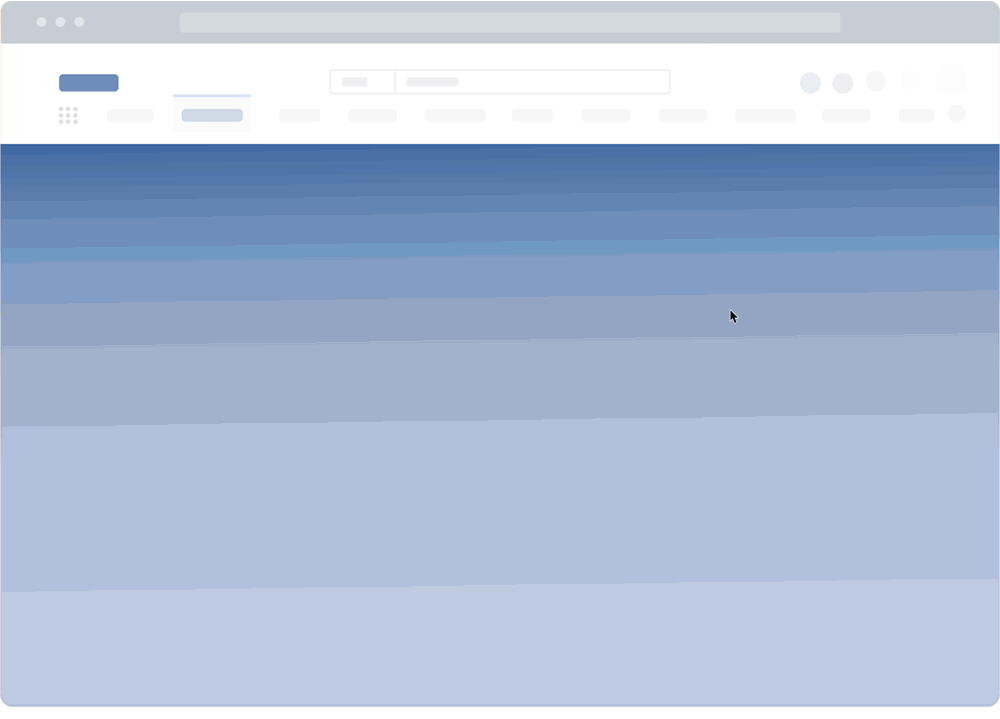
After your initial CRM implementation and launch, enable sellers with real-time support with Self Help, which aggregates SOPs, sales processes, training, CRM third-party tutorials, and more in one searchable resource center that overlays your CRM. Use Smart Tips to provide additional context at critical moments in your sales processes.
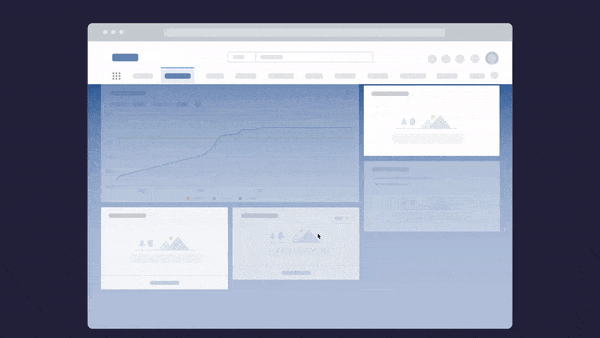
Make announcements to your different sellers with in-app Pop-Ups to make team announcements, alert end-users to process changes, remind sellers of deadlines, etc. Use Beacons to attract CRM end-user attention to underutilized or new features.
6. Analyze CRM end-user behavior and address friction areas
Product analytics tools will help you monitor user distress signals, such as rage clicks, dead buttons, error clicks, excessive page reloads, broken paths, and repeated scroll actions. You can use that data to understand where your end-users encounter friction so you can either remove the blocker or create better user guidance resources to help them navigate it.
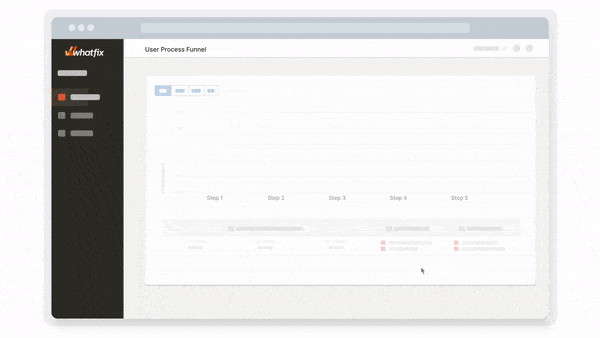
This creates a flywheel effect for Whatfix customers, constantly analyzing end-user behavior for friction points, testing new in-app guidance and support to overcome these unoptimized workflows, and analyzing the impact they had – then starting the cycle all over.
Challenges in the CRM Transformation Process
As a digital transformation project, your CRM transformation faces a whopping 70% failure risk. Whether it’s thanks to your employees’ resistance to change, misaligned priorities, nonexistent training, or poor support that leads to low CRM end-user adoption, here are the most significant challenges that could potentially derail your CRM transformation.
1. Data security and privacy issues
While making the switch to a new CRM, moving to the cloud, or upgrading to a newer version, you need to adhere to data protection regulations (such as GDPR, HIPAA) every step of the way.
Failure to comply can lead to legal and financial consequences and damage to your organization’s reputation. Likewise, you need to ensure that sensitive customer information is encrypted during storage, transmission, and processing to prevent unauthorized access.
2. Integrating with new and legacy systems
According to BetterCloud’s 2023 State of SaaSOps report, the average organization uses 130 SaaS applications. Most likely, you’ll need to integrate at least a handful of those with your CRM to make it easier to pull data automatically, trigger actions, and update statuses using if-then workflows
If you’re adopting a mainstream CRM (Salesforce, SAP, Netsuite, etc.) with a large application store, it can be as easy as copying and pasting an API key. Otherwise, you might need to write CSS or JavaScript, integrate with your custom application, and keep monitoring its health once it goes into production.
3. CRM data migration
Most mainstream CRMs have dedicated data migration functionality to help users export their information. And, even if yours doesn’t you can opt for standalone data migration tools to help you backup your data and switch to a different platform with little friction. The main CRM migration problem you’ll face is the need to validate your data to ensure it’s accurate and complete, and to plan your migration around your day-to-day operations to minimize disruptions.
4. CRM end-user adoption
Depending on who you ask (Gartner, Nucleus Research, Butler Group, etc.) CRM implementation failure rates range between 30% to 70%, primarily due to what Forrester Research calls people issues.
And the single biggest of those ‘people issues’ is slow user adoption. Suppose you can’t get enough of your organization using your CRM from the get-go. In that case, you may never be able to reach critical mass and those who have put in the effort to go through the onboarding process might eventually disembark if they realize the new CRM isn’t being used properly – or not at all. While you’re investing in transforming your CRM, you equally need to invest in in-app guidance tools, self-paced onboarding tours, interactive walkthroughs that simplify your end-users’ learning curve, and constant CRM end-user performance support that assists them when they face issues with your contextual workflows.
5. On-going CRM reinforcement training and end-user support
While CRMs have one general goal, the user experience, workflow sequences, and design choices individual tools adopt don’t translate between platforms. For certain platforms, switching CRM between different product versions requires significant retraining to get a hang of its design and logic quirks.
Whether you’re updating your current CRM instance, switching from on-premise to the cloud, or moving away to an entirely new tool, you will need to invest in re-training programs, certifications, and on-demand CRM end-user support and coaching.
With Whatfix Self Help, enable your CRM end-users with in-app support contextual to their role, where they are in the CRM, and your company’s unique sales processes. Self Help automatically crawls your sales SOPs, playbooks, processes, training resources, onboarding materials, CRM third-party links, and more – aggregating them into one, searchable resource center that overlays your CRM UI. This enables end-users with support in the flow of work, at the moment of need.
6. Budgeting and resource allocation
The average CRM transformation (mostly new deployments) costs roughly $7,500 per user over a five-year period. At that rate, onboarding your team of 100 decision makers (e.g., SDRs, managers, etc.) will cost you $150k annually in recurring costs—till infinity.
And that’s before you factor in premium implementation services (e.g., budget up to $100k if you’re deploying a Salesforce instance), hiring a team of in-house administrators (for complex systems like NetSuite, SAP, SFDC), user training, and data migration.
By the time you’re done accounting for all the potential edge cases, you might be crossing into seven figures. If you’re a larger enterprise with, let’s say, 1k employees, your requirements will be significantly more complex and your bill will end up a lot larger.
Of course, a CRM can easily return $30.48 in ROI for every $1 you spend on it, but getting the buy-in for that figure can be a drag, especially if you’re a smaller or mid-tier company.
Even if you’re not deploying from scratch, as you upgrade your systems during the transition phase, you’ll need to assign several key employees to the CRM transformation team to ensure they’re customizing your instance according to each department’s needs. Consequently, your day-to-day operations can take a hit in the short-term.
7. Analyzing and optimizing CRM workflows
CRM workflows automate repetitive sales and customer support tasks using if-then workflows that automatically trigger when a preset condition is met. For instance, CRM workflows can be programmed to automate certain tasks with logic sequences such as:
- If a prospect goes silent for 36 hours after receiving a quote from one of your agents, then schedule an automatic follow-up email or move them into an SDRs queue to call them up.
- If a new user doesn’t start using their account within 36 hours after they sign up, then send them a re-engagement email offering them a walkthrough with a product advocate.
- If a customer upgrades to a paid tier, then email them an offer for a walkthrough with a product advocate.
- If a prospect doesn’t open a quote after 72 hours, then assign an agent to follow up to know if they have any objections.
- If a new customer checks the pricing page after signing up for a free tier of your product, then enroll them in a drip campaign explaining your product tiers and offering a discount on your premium plans.
So, what happens when you have dozens or hundreds of these workflows on a CRM platform that you’re switching from?
Mainstream CRMs like HubSpot, Salesforce, SAP let you export your workflows in XML format, although you might have to recreate them manually if either of the CRMs you’re transferring between doesn’t support workflow & validation exports.
With Whatfix’s end-user behavioral analytics features, track any CRM end-user action and journey to identify areas of friction, map user flows, test new processes, and more. Create new in-app guidance or support elements at key friction moments to address these issues – and then test the impact it has. With Whatfix, CRM workflow optimization becomes a simple, continuous process that enables sellers to improve efficiency and achieve business outcomes.
CRM Software Clicks With Whatfix
The infrastructure aspect (choosing and deploying the right product) of the CRM transformation process is just half the work done: you still have to train your end-users continuously, encourage adoption, and proactively guide users through friction points with self-help resources. From there, you must test the adoption of these workflows, as well as continuously work to optimize processes.
That’s where Whatfix comes in: Whatfix helps CIOs simplify CRM transformations using a combination of:
- Guided Tours, Task Lists, and Flows users can navigate at their own pace.
- Contextual in-app guides that highlight features and UI elements like form fields, errors, tips, and tricks.
- Checklists that gamify the onboarding experience and help users track their learning progress and role-based onboarding experiences that you can tailor to specific user personas.
- Self Help that enables end-users with help libraries rich with pre-recorded demos, wikis, SOPs, playbooks, walkthrough videos, and help docs.
- Universal localization that translates UX text into 70+ languages.
- Field validation to ensure CRM data quality remains high.
- End-user behavioral analytics to identify areas of end-user friction, optimize processes, beta-test new CRM workflows, monitor process governance, and more.
- Collect end-user feedback with in-app Surveys.
CRM software clicks better with Whatfix – Request a demo to learn more.

